The 50 States Project is a yearlong series of candid conversations with interior designers across the country about how they’ve built their businesses. This week, Philadelphia-based designer Glenna Stone tells us how her experience in supply chain management prepared her for this moment in the industry, why she loves marrying technical and creative skills, and which hole in the textile marketplace she hopes to fill with a product line.
Did you always know interior design would be your career?
The short answer is no. My undergraduate degree was actually in industrial engineering, and I worked for about 10 years in supply chain management for Fortune 500 consumer product companies. I worked for PricewaterhouseCoopers on brands like Gillette, WernerCo, Nabisco and Unilever—I was helping design supply chains, and then married tools and technology to run the business. I eventually left PWC and ended up working full-time for Gillette, where I ran promotions for Oral-B and Braun in North America—a lot of things with movement of products, and creating custom packages and getting artwork done for them. We were living in Boston, and then Procter & Gamble acquired Gillette and my job was moving to Cincinnati.
Developing supply chains? So you were perfectly poised for this moment in the design industry. When did you make the switch?
While we were living in Boston, I started taking classes at Rhode Island School of Design. I loved my job. I felt like I was very successful, and I was very happy with what I was doing. The intention was not to switch careers, it was just to do something more creative in my life. My mother’s a fine artist and an art teacher, and my stepdad, who I grew up with, did a lot of fine woodworking—he built a lot of furniture and wainscotting paneling in our house. I grew up in a very creative environment, but my mother always said to me, “Do not go into anything creative—you will never make any money.” She said, “You’re good at math and science. Go into engineering.”
Why design classes?
I started taking photography and cooking classes at night—this was before I had children, so I had that time in the evening. After that, I said, “I’m going to take an interior design class. It seems fun.” That’s all it was to me. The first class I took with this three-hour studio intensive. My husband thought I was crazy, because I would drive an hour to Providence, take a three-hour studio class, and drive an hour back after a full day of work. But taking that class, something just lit up inside me. I realized: I need to be doing this.
What was it that pulled you in?
It’s the marriage of technical and creative. I am very half-and-half in terms of how my brain works. I could leverage all of the skills from 10 years of project management and working with different types of vendors. I started taking more classes. When I took an AutoCAD class at Boston Architectural College, my husband finally said, “What are you doing?”
On July 16, national sales training and business development expert Alison Mullins will help you build confidence and clarity in your sales process. Click here to learn more and remember, workshops are free for BOH Insiders
We want to hear your thoughts! Take BOH’s annual reader survey, an 8-minute questionnaire that helps us get to know you better and will allow us to tailor our storytelling to your business needs.
Were you like, “I’m laying the groundwork for a career change”?
It didn’t start out like that. I just fell in love with it. But eventually I said, “I think this is what I should be doing.” And then, when my job was moving to Cincinnati, I just woke up one day and said, “I’m not moving to Cincinnati. I’m taking the severance package, and I’m going to grad school.” So that’s what I did.
I grew up in Delaware and my husband grew up near Harrisburg, Pennsylvania, so we always planned to come back to the Philadelphia area when we were thinking about starting our own family. I applied to schools in New England, and I got my master’s in interior architecture and design from Drexel. Since then, I’ve never looked back.
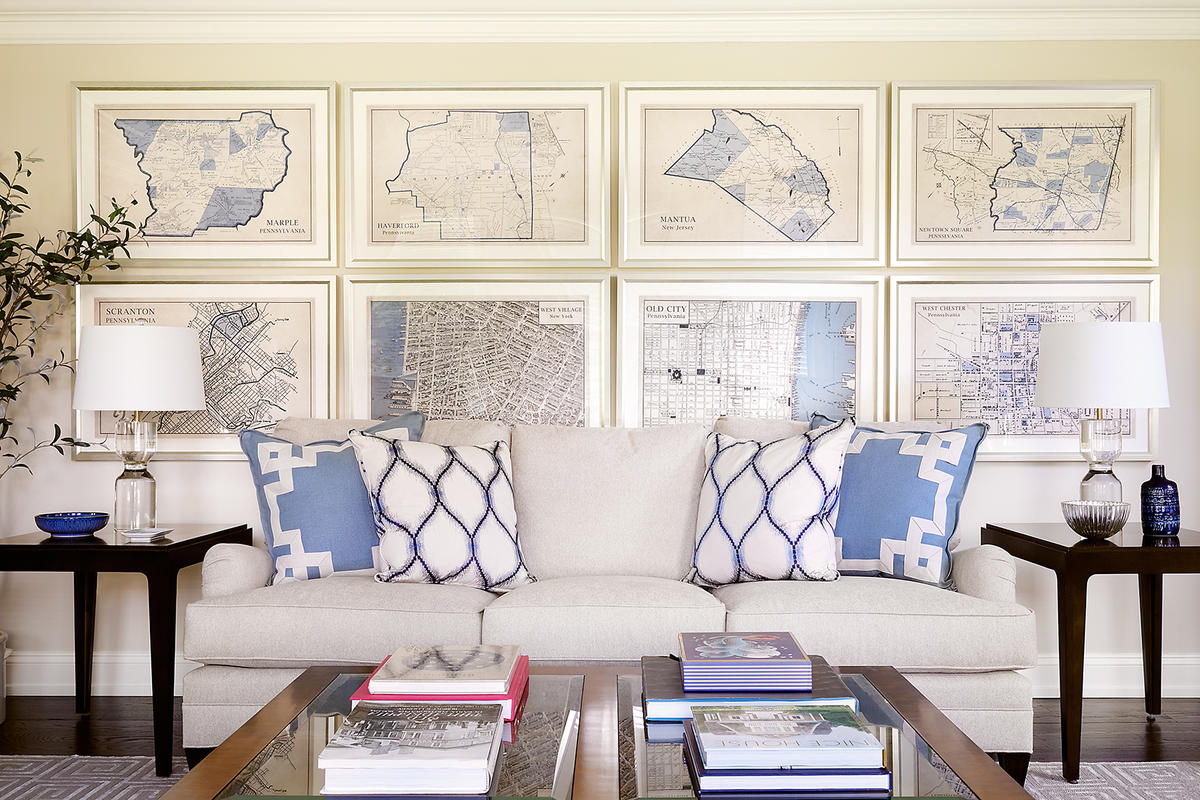
Where did you go after graduation?
I worked for a high-end residential firm in Philadelphia, and then for an architect. In 2010, around the time I had my second child, I said, “I think I’m going to try to do this on my own.” I started off in my house and continued to grow the business. In the beginning, it was nice, because I had two young children—I ran the business pretty slowly and on my own terms those first few years, and then it kind of just took off.
How did you get that first client once you were on your own?
My first client was a family friend. She was redoing three rooms on her first floor and gave me a call to say, “Would you help me?” I said, “Absolutely.” We had been living in the area for about three and a half years, but I didn’t have a great network here yet. For me, [getting more jobs] was all about networking and connecting with Realtors, builders and architects and joining industry organizations—anything to get active in the design and build community in Philadelphia.
How long does it take to lay the foundation to really get connected?
A long time. I feel like it finally has taken off in the past three or four years. You’re constantly building upon that network—joining organizations like the home builders association, reaching out to people to meet for coffee, and learning about their business. It takes a long time—understandably—because people don’t want to refer people they don’t know. So it takes a long time to build that professional rapport with someone.
What does your firm look like now?
We have 10 people, and I’m looking to hire another person right now. We have our own studio space, and we recently leased the second floor of the building that we’re in. We’re in the process of finishing renovations there, because we were really bursting at the seams, so we’re expanding to our second floor.
Right now, our project load is about 30 clients. However, I feel like our client load is a little bit bigger than normal because of the supply chain issues. So we do the design, order everything, and now we’re just waiting six months or a year for everything to come in. But there’s still a need to keep in touch with these clients because there is so much time that’s happening between when the design is done, when we start ordering, and when we’re ready for installation. I’m trying to continually keep in touch and let clients know that we’re still following their orders and giving them updates as things change. I don’t want them to feel in any way forgotten. It’s just the nature of what we’re all doing right now.

How has the firm grown over time?
The first role I hired for was an assistant designer, and soon after that was an administrative office person. When I moved out of my house into an office space, I was subleasing within an architecture firm in our town. It was great to be inside an architecture firm, and it was a month-to-month arrangement. There was no pressure for me, so it didn’t seem like a scary leap. Then we outgrew that space in about a year and a half. We’ve been in our current space since then. By the time we outgrew that space, I had two full-time designers and a part-time office manager.
What does everybody do today?
Right now, I have a leadership team: a senior operations manager and a design director. On the operations side, reporting into the senior operations manager, we have an office manager and a marketing coordinator. On the design side, we have a senior designer, three designers, a design assistant and myself.
I love that you have a leadership team, and that you call it that. As you have grown, what role have you carved out for yourself?
It’s definitely been new to me because I hired our leadership team earlier this year, so we’ve been trying to figure that out. It’s been life-changing. Until I hired them, I had seven people reporting to me, and that was a little crazy—I couldn’t give everybody the attention they deserved, and I was the bottleneck for everything. Right now, because some of our projects are two years old, I didn’t hand those projects over, but the design director is getting all new projects, and I’m finishing up existing projects that I was working on because I don’t want to have any disruption.
Currently, I’ve been managing all the old projects and taking on selected new projects, depending on the scope, the timeline and my bandwidth. Ultimately, I will probably take on projects that are at a certain revenue, and everything else will go to a design director.
Are you still approving all of the design work for the projects that you aren’t directly managing?
I am not approving everything, but we’ll have flat lay walkthroughs, and I’m involved in some of the conceptual meetings depending on the client. For those larger projects, I’m involved in vision planning and developing the concept. Then the design team will take it until it’s ready for my review. At that point, I’m just tweaking things if they’re stuck on something, or I’m helping resolve some of those issues. I’m very lucky because our design director is fantastic. I went to grad school with her, and I’ve been trying to get her to work with me for about five years. I’m very persistent.
Is that kind of relationship and belief in somebody what it takes to be comfortable handing off some of the oversight?
Definitely. It wasn’t like I posted the position, then interviewed people, and I’m hiring somebody that I don’t know. I went to grad school with her, and we’ve kept in touch over the years. I knew the firms that she had worked for prior, which are very well-respected firms that do high-caliber work. So understanding her process and knowing that we were educated in the same way has made all the difference. We can finish each other’s sentences, so that helps to have a lot of trust and faith in her.
Do you have the same aesthetic tendencies, or is it more about process?
It’s more about the process. That’s one really big thing I took from the consulting and corporate world: having standardized processes and procedures. Some people say, “Oh, in a creative field, you really can’t do that.” I actually feel that it’s even more important because having that structure almost allows for that creativity because you don’t have to think about the process or the next step. You can really focus on the creative aspects of the project because your mind isn’t thinking, “What’s the next step? What do I do now?” Having that standard process of how we structure our meetings and what we’re accomplishing at each stage in the process is very valuable, especially as we grow and have more people on the team. How we name our files needs to be the same so that we can all find them, because we’ve got multiple people working on projects. It’s too difficult to grow if you don’t have that process foundation.
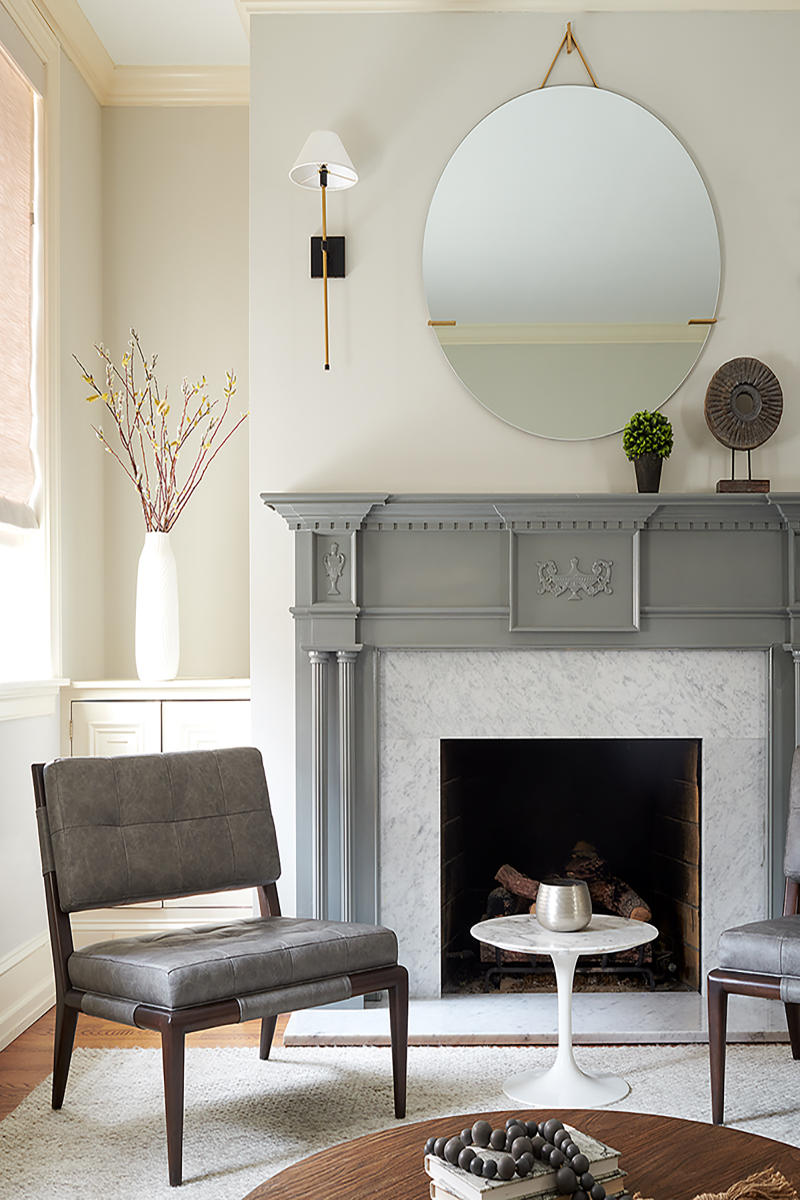
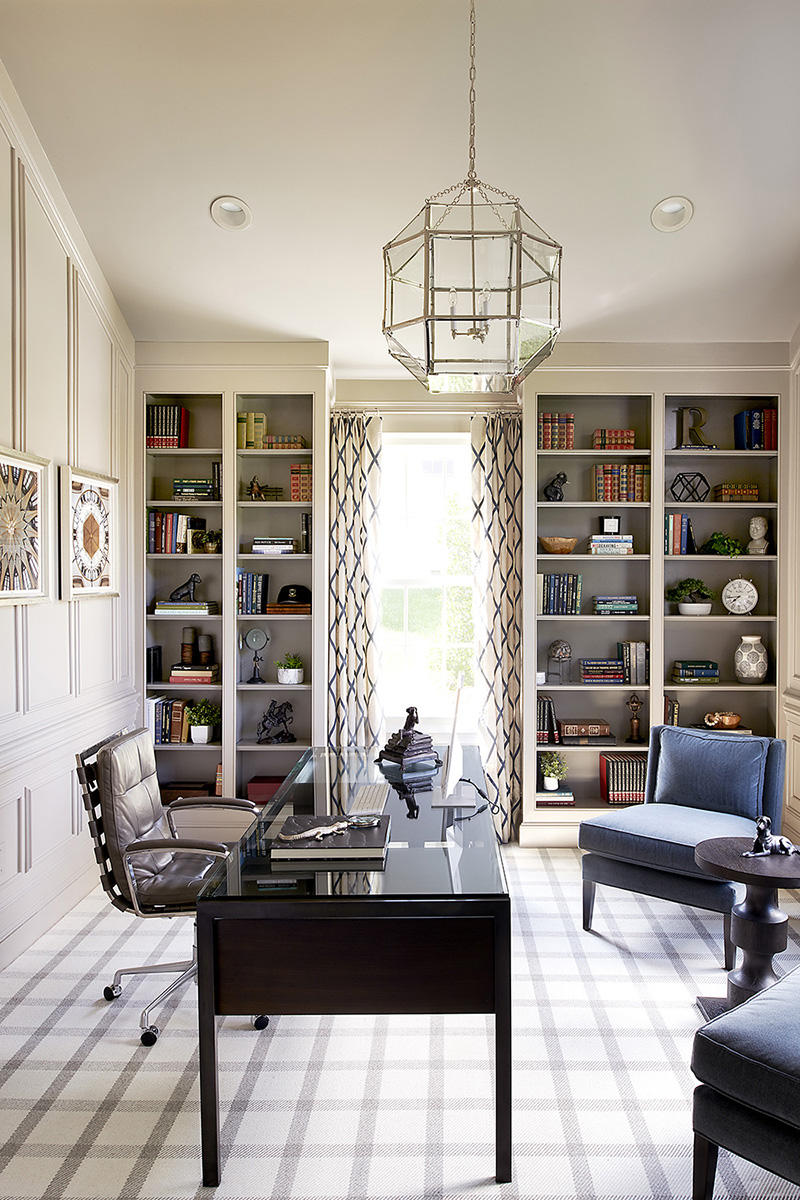
When you talk about growth, what do you see the firm growing to be? Do you have a vision for five or 10 years from now?
I do and I don’t. I would probably want to grow our firm here in Philadelphia by two or three more people. I don’t want to force growth, and I need to make sure that we have the work coming in as well. I want to make sure that we hire the right people, so I don’t want to rush anything. I also don’t know that I would grow much beyond that. But I have been exploring potentially opening up a second office in another location, not in the Philadelphia region. We are in the very preliminary stages for that, and I am looking to have our own textile line two or three years down the road.
When you’re looking for a second location, what kind of research do you do to know there’s a market?
That’s a good question, and I’m just starting to explore this. I haven’t really even started to deep-dive into the due diligence. Right now, it’s understanding the competitive landscape and reaching out to Realtors, architects and builders to understand whether they feel like there’s a need, and maybe even trying to get a couple projects in that location without setting up an office space just to get our feet wet and see if it’s a good fit. We would have a structure in the Philadelphia office to support another office, or even use resources out of the Philadelphia office. But I also might go down this path and say, “No, this isn’t a good idea.” I’m not dead set on doing this, but to me, that would be exciting to have a second location.
That’s really cool. You mentioned a textile line—would that be in-house or a partnership with a brand?
I think right now it would probably be in-house.
What’s missing from the marketplace, and what are you hoping to add to that space?
When I’m sourcing, I struggle with finding really great textures and small-scale prints or patterns, so that’s where I’m focusing right now.
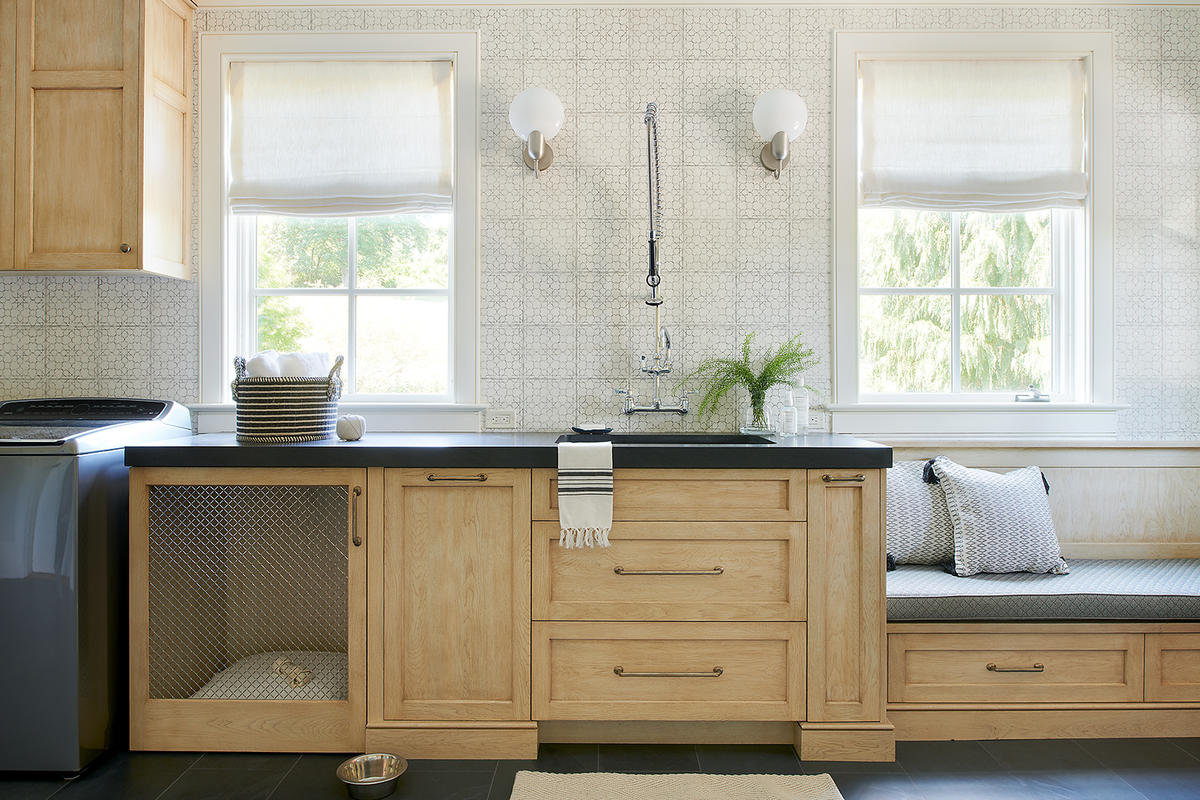
Tell me a little bit about the design scene in Philly.
Philadelphia is definitely growing a ton, and it has been ever since we got here, but we lost our design center four or five years ago. Everybody went to separate showrooms while we were waiting for another design center to be built. Now, that design center is built, but there are very few showrooms there. Because there was a two-year gap between our big design center closing and the new one opening, a lot of showrooms opened in separate locations throughout Philadelphia. They didn’t want to relocate again, which I can understand, but that’s definitely challenging. We utilize New York a lot—200 Lexington and the D&D Building. We’re lucky that it’s not that far, so we will do design trips or take clients to the showrooms when we need to.
When the Philadelphia design center closed, that also prompted me to add a small showroom aspect to our studio. A lot of people don’t want to go into Philadelphia and schlep to seven different showrooms that aren’t in one building, so it became very hard for people to sit on things. So we selected a couple of key upholstery lines that we do a lot of business with, and we have their pieces in our showroom so that clients can try them, even if we don’t end up sourcing from that particular line. It’s all different seat heights, depths and fills, so we can at least assess what feels comfortable to them. I have found that to be amazing, and the clients really appreciate it because it’s like one-stop shopping. It replaces what would be a half-day commitment to have a client go into Philadelphia and go to the showrooms.
What kinds of projects are coming your way right now?
We have a lot of people that have just purchased homes. We’ve seen people leaving Center City in downtown Philadelphia and moving out, and we’ve seen a lot of people moving to this area from Manhattan—probably about 25 percent of our projects right now are people who have relocated. We have a couple of very large projects that are 10,000 to 12,000 square feet of renovation. There’s not a lot of new construction in Philadelphia, so most of our work is renovation—a lot of times they are renovations of older homes. Particularly the area that our studio is in and where I personally live, most of the homes were built in the 1920s, so we do a lot of renovation work because they all need it. I have historically done some commercial work as well, but right now, we’re mostly residential. We have two small commercial projects, so I’m hoping that will start to pick up, because I like the variety of doing both.
How are you deciding what you say yes to?
We’ve started implementing some minimums because we needed to cut down on our new client inquiries. That sounds terrible, but we just needed to get more qualified people. I think $40,000 is our minimum investment, which includes purchases and design fees. Sometimes we will bend that if we think it’s the right client and can lead to additional work, or if it’s a previous client or a referral. But that’s generally our minimum investment level.
We try to take on projects that are not just renovation, and there’s at least another room in addition to that. Those are our minimum thresholds. During our prospective client process, we talk to them about their budget, what they’re looking for, their design aesthetic, our team approach, what to expect in terms of design fees, project length and lead times. Throughout that initial call, we’re able to quickly decide if it’s a project that we think is going to be a good fit. We want them to also buy into our process, our structure, our team approach, and the way that we design and execute their project.
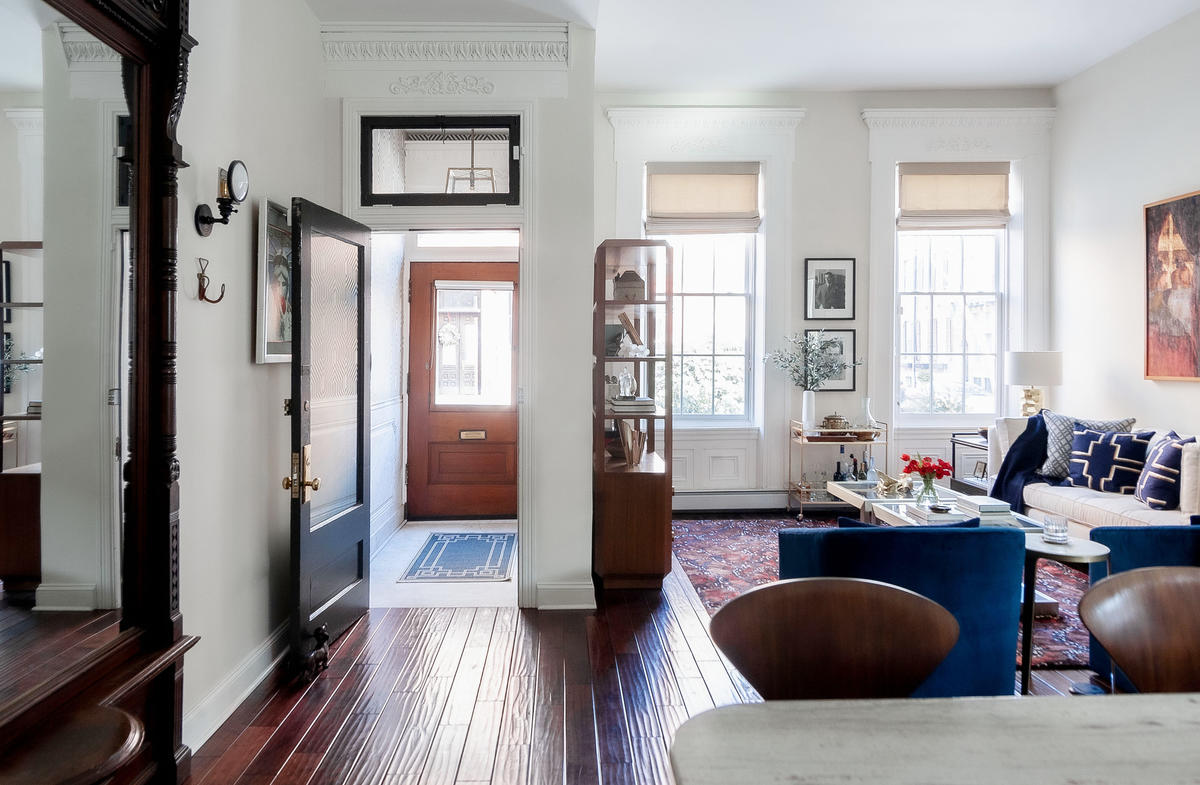
What are the biggest changes that the past 18 months have brought for the way your team works?
The biggest change is that we did not go back full-time into the office. We are still allowing people to have a flexible schedule and be in the office three days a week. We’re completely set up to work from home two days a week, and we’ve been very impressed with the team’s ability to continue to meet our client demands. From a work-life balance perspective, that’s certainly one of the biggest changes that we’ve seen.
It’s been a bit challenging with some of the newer people we’ve hired, in terms of training, so we’re trying to bring them into the office more to do shadowing. I’ve just found that their onboarding process seems a bit slower than others in the past when we’re all in the office full-time. Work-life balance is important to me. Our team doesn’t work weekends, and they don’t really work a lot of overtime. I want people to go home to their families and feel fresh for work the next day, or have that weekend off. Having the ability for people to work from home is a great method that I am committed to keeping as part of our culture.
Has it changed the way you relate to clients as well?
Not really. I think from the client perspective, it’s all pretty seamless. We still can do so much on Zoom: I can redline drawings now electronically. When we’re doing drawing and drafting, we can do that on Zoom. We can review fees, and we meet with some clients on Zoom now, which I think that they like because they don’t have to travel into the studio. They can do it from anywhere. Certainly, when we get to fabrics and finishes and all the selections, we have those meetings in person, and I think it’s very critical to do that in person.
How have you approached billing?
In my work experience prior to starting my firm, [the companies] billed hourly, and that’s what we’ve continued to do. I put together a design estimate of how many hours I think the project is going to take. It’s listed in the client’s letter of agreement, and I give an average expected design fee that they can use to budget. In our prospective client process, we throw around some averages just to make sure we’re on the right playing field. I think having those honest conversations in the beginning is really important. I’ve been exploring doing a fixed fee, but I don’t see us changing that in the foreseeable future.
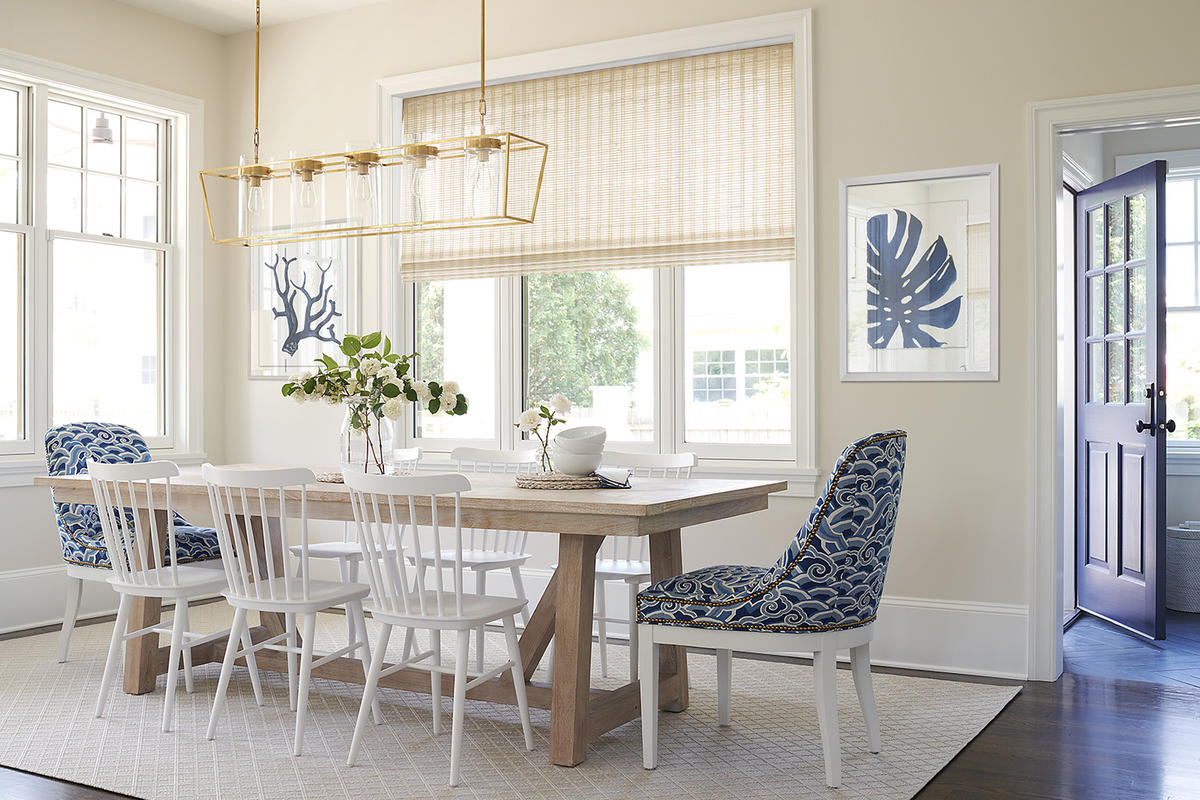
What’s one thing you wish you had known when you started the firm?
Dream bigger, and trust myself more. I’m always very cautious. Even just hiring somebody, I feel like it’s just my financial responsibility now to have them as part of our company, and I take that very seriously. I’m not saying that I shouldn’t do that, but I am saying that I could have had faith in myself and the work that we’re putting out and dreamed a little bit bigger, sooner.
Do you feel like you’re dreaming bigger right now?
Yes. When you have a lot of time to reflect—like a pandemic—you have time to think, “What do I want? Life is short, and what is going to keep me fulfilled?” So I am dreaming bigger.
I think the one thing that has continued to hold me back is that I’m a mother of two kids I love, and I want to spend time with them. I don’t want to be a workaholic. I’m still working 50 to 60 hours a week, but I want to be there on the weekends, and I want to be there for my kids. That’s been a little bit of my hesitation about the second office: What is it going to take for me to do that, and do I want to be pulled away from my family? And that’s a hard question.
What does success look like to you?
Success is about having a financially viable business, but to me, it’s really about creating a company that people love to work at and creating a culture that takes care of our employees—that mentors them and helps them grow. This year, I had my first employee who voluntarily left. She decided to go back into jewelry design and moved to Nashville. To me, it is successful that in about 11 years of business, I’ve had one employee voluntarily leave. I want to create a place where people want to come to work every day.
There’s a variety of factors that influence that, whether it’s the type of projects that we’re doing or if they feel like there’s a growth opportunity. That’s one of the reasons that I want to grow our business: I want to retain people, and I want them to have a place to grow, where they can feel like a second family. If I can continue to do that, that’s success. I don’t just want to have an interior design firm—I want to have a great place where people want to come work.
To learn more about Glenna Stone, visit her website or find her on Instagram.





























